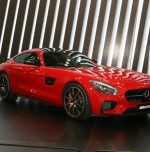India-born scientists win US prestigious awards

Two India-born scientists from Massachusetts Institute of Technology (MIT) have won the prestigious US awards for their revolutionary inventions. The two scientists are Ramesh Raskar and Dinesh Bharadia.
Ramesh Raskar was born in Nasik. He is an imaging scientist and inventor at MIT. He conferred the Lemelson-MIT Prize 2016 which was announced on Tuesday at Cambridge, Massachusetts. The award carries a cash prize of $500,000.
46-year old Raskar is working as an Associate Professor at MIT. He is the co-inventor of radical imaging solutions that includes Femto-photography. It is an ultra-fast imaging system. This system enables one to see around the corners. It has a camera with which users can read the pages of a book without opening the cover page.
At present, the technology uses ultrafast imaging which can capture light at 1 trillion frames per second. Using this technology, cameras can create slow-motion videos of light in motion. The Femto-photography of Ramesh can transform several industries including internal medicine and transportation.
Ramesh plans to use part of the prize money to introduce a new effort that uses peer-to-peer invention platform. These can provide new methods to help many young inventors of the world to invent collectively.
Another scientist is Dinesh Bharadia who hails from Ichalkarnji in Kolhapur, Maharashtra. This 28-year old researcher at MIT won the Paul Baran Young Scholar Award. The award carries a cash prize of $4,000 and gives them expenses to attend its annual awards event.
He conferred this award for his contribution to send and receive radio signals. These include the data of mobile telephones and data on the same channel. So far, there is an assumption that radio cannot receive and transmit on the same frequency band due to subsequent interference. But, the research of Dinesh disproved it. His technology can facilitate to build relays so that signals can be listened from a cellular tower and transmitted immediately to extend throughout the country.
Image Credit: Madcoverboy at English Wikipedia / CC BY-SA 3.0, via Wikimedia Commons
You may also like
Image Reference: https://commons.wikimedia.org/wiki/File:MIT_Kresge_Auditorium.jpg
Recent Posts
- Eat your way into a Lucky New YearIn Ireland, New Year’s Day centres on simplicity. Buttered bread is eaten to symbolise security and abundance.
- A village innovation, from paddy waste to plastic-free platesAgriwareplates, available in sizes ranging from 10 to 12 inches, are priced at ₹7 each, while cups cost ₹3 and bowls ₹4.
- When silence builds a stronger voiceDhwani Pravinbhai Patel’s journey stands as a powerful reminder that resilience can grow quietly and still transform lives.
- Eat your way into a Lucky New Year
What’s new at WeRIndia.com
News from 700+ sources
-
With mounting pendency, infra woes, NCLT struggles as insolvency cases surge beyond capacity
-
From GST to IT and Labour Code to Job Guarantee 2025 stood out as Year of Reforms
-
Magnitude 5.3 earthquake strikes Susanville, California: USGS
-
Still Cant Lose Belly Fat? Your Hormones Might Be the Reason
-
Rajnath Hoists Flag In Ram Temple Complex To Mark Second Year Of Idol Consecration
-
J&K court acquits 3 accused tried for ‘terror’ activities
-
WeRIndia – A News Aggregator
Visit werindia.com for all types of National | Business | World | Politics | Entertainment | Health related news and much more..










Leave a Reply